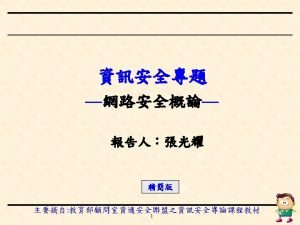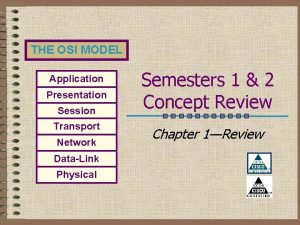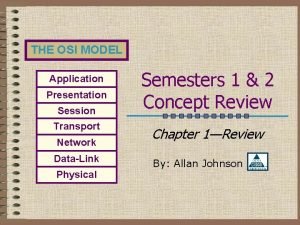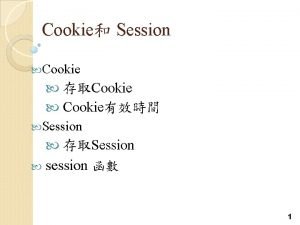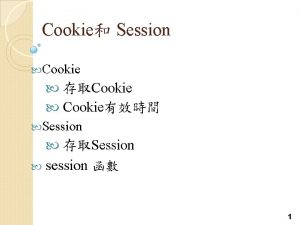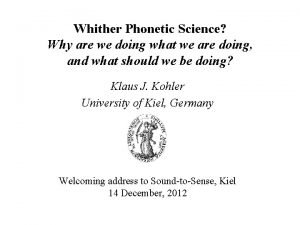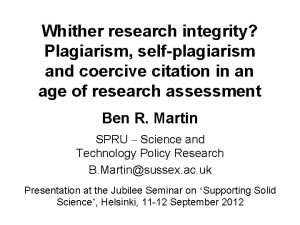For the presentation at the session 3 Whither
















- Slides: 16

For the presentation at the session 3: “Whither ASEAN-led regional security mechanisms amid new dynamics of US-China relations, ” at the conference of”ASEAN and China-US Relations: New Security Dynamics and Regional Implications, ” organized by Diplomatic Academy of Vietnam and Konrad Adenauer Stiftung, March 10 2016, Hanoi Beyond the US-China Relations: Tasks and Challenges of ASEAN’s Multiple Engagement Tsutomu Kikuchi Professor, Dept of International Politics, Aoyama Gakuin University and Adjunct Fellow, Japan Institute of International Affairs(JIIA) e-mail fwjc 3650@mb. infoweb. ne. jp

• Today’s Presentation 1, The challenges facing Asia: Emerging “Two Asias” within the liberal order 2, Who decides the future of Asia? 1) Structure of the international relations 2) “Beyond the US-China relations”: importance of “the rest of Asia” 3, ASEAN as a Group of “Swing States” 4, Challenges for ASEAN “Taming” major powers politics through ASEAN-related regional institutions(ASEAN+X) ASEAN’s institutional vulnerabilities 5, Tasks for ASEAN

1, Challenges facing Asia: ”Two Asias” (1)“Two Asias” emerging in a broadly defined liberal order 1)“One Asia” in search of a deeper harmonization of domestic institutions and more strict compliance with the international rules 2)“The Other Asia” being reluctant to accepting the harmonization of domestic institutions and strict commitment to the international rules/norms 3)“Routing around(迂回)” strategy in a loosely organized liberal order (neither fully accepting nor fully refusing the rule-based liberal order, but “routing around”) 4)Our Task: avoiding “Two Asias” and constructing more tightly organized rule-based liberal order.

2, Who decides the future of Asia/Asia-Pacific? (1)Scenarios centered on the US-China relations 1)US-China condominium (G 2): China as a responsible stakeholder of the international system 2)US-China Cold-War type of confrontation 3)US continued hegemony 4)China’s regional hegemony

(2)None will happen 1)US and China: many vulnerabilities and constraints internally and externally(divided politics, economic slowing down, deep-seated structural problems, internal instability, external challenges etc. ) US: still strong but no longer full-fledged hegemonic power China: not full-fledged rising power 2)Deep economic interdependence “Economic MAD(Mutually Assured Destruction”; Both putting the priority on economic development; Many policy coordination mechanisms between them, etc.

3)Economic development in the region-wide production, finance and investment networks run by private sectors(Neither the US nor China can dominate them) 4)Huge gaps in political, economic, social values and future visions of the international order(“G 2” is impossible) 5) Overall quite tense but cooperate in some functional areas(”Cool” War? ) 6) The US and China: need the support of “the rest of Asia” to realize their policy agenda

(3) Beyond the US-China relations: the importance of “the rest of Asia” 1) Many countries and institutions having substantial political, economic, military and bargaining powers in the “Great Game” (Japan, India, Russia etc. ) 2) They are resisting the construction of the US-China centered regional order 3) China: Geographically advantageous, but failed to stabilize the relations with the neighbors ; quite different from the situation where the US emerged as the hegemonic power in the Western Hemisphere

(3) Beyond the US-China relations: the importance of “the rest of Asia” 1) Many countries and institutions having substantial political, economic, military and bargaining powers in the “Great Game” (Japan, India etc. ) 2) They are resisting the construction of the US-China centered regional order 3) China: Geographically advantageous, but failed to stabilize the relations with the neighbors ; quite different from the situation where the US emerged as the hegemonic power in the Western Hemisphere

4) The US: a distant power, but many allies and friends in Asia 5) The US and China: pursuing to enhance the relations with Asia countries a) The US: “Rebalancing” strategy b) China: “One Belt One Road” idea, AIIB, FTAs 6) The future policy directions of “the rest of Asia” will have the enormous impacts on the future liberal order of the Asia-Pacific. 7) ASEAN is one of the “rest of Asia”: (Potentially big impact on Asia)

3, ASEAN: a group of “swing states” in the rule-based liberal order (1) “Swing States”: relatively small but strategically located states; future policy directions are uncertain; having substantial impacts on the future regional order. (2) ASEAN and the post war rule-based liberal order 1) “Two faces of the post-war rule-based liberal order” a) A strong tendency of intervening in internal affairs of the countries concerned; harmonization of domestic institutions b) But, at the same time, allowed the flexibility(allowed to keep “indigenous” domestic institutions, paving the way for the developing(ASEAN) countries to join the rule-based liberal international order

3) ASEAN countries joined the (loosely organized) liberal order and enjoyed economic development: They Asian are the major beneficiary of the liberal order. 4) But, they are reluctant to accepting strong/strict rules relating to the harmonization of the domestic institutions( democracy, human right, rule of law, transparency, accountability, intellectual property rights, labor regulations, SOEs, etc. ) and strict commitments to the international rules

(2) “Routing Around” strategy (led by China) 1) Neither rejecting(拒否) the rule-based liberal order, nor accepting(同調) the tightly organized liberal order touching upon the harmonization of domestic institutions and strict(legal) commitment to the international rules/norms 2) Pursuing the third way(迂回)(AIIB, RCEP, FTAs, etc) 3) “Two Asias” emerge within a loosely organized liberal order 4) How will ASEAN as an institution move ahead? : Crucial for the future of Asia.

4, Challenges for ASEAN: ASEAN’s institutional structure (1) ASEAN’s Institutional Strategy 1) ASEAN-based regional institution building: Many ASEAN+X regional institutions (ASEAN+1, ASEAN+3(APT), ASEAN+6(EAS), ARF, ADMM Plus etc. ) 2) Keeping “ASEAN Centrality” in multilateral institutions 3) “Taming” power politics among the major powers through ASEAN-related regional institutions

(2) Challenges for ASEAN 1) Lack of Internal cohesion: Diversity and the intervention by the major powers 2) Institutional Capacity: Weak institutions and capacity 3)Political instability in the key members(Thailand, Malaysia etc. ) (4) Lack of leadership: Indonesia, inward-looking(heavy domestic agenda)

5, Pressing tasks (1) “ASEAN Political and Security Community(APSC)” idea Two Dimensions of APSC; (A) Internal dimension: institutional convergence: democracy, human right, rule of law ( enhancing ASEAN’s internal foundation by harmonizing domestic institutions) embedded in the ASEAN Charter *Revisit the ASEAN Charter (B) External dimension(relations with outside major countries) (managing ASEAN-led regional institutions) *Strengthening ASEAN-based regional institutions (especially EAS) (2) National Capacity-building (maritime domains, domestic institutions) *Early joining TPP and domestic reform * Maritime security capability building

Thank you for your attention !
 Famous painting
Famous painting Application transport network data link physical
Application transport network data link physical Route determination in osi model
Route determination in osi model Application presentation session transport network
Application presentation session transport network Presentera för publik crossboss
Presentera för publik crossboss Iso 22301 utbildning
Iso 22301 utbildning Myndigheten för delaktighet
Myndigheten för delaktighet Att skriva debattartikel
Att skriva debattartikel Kung som dog 1611
Kung som dog 1611 Tack för att ni har lyssnat
Tack för att ni har lyssnat Tobinskatten för och nackdelar
Tobinskatten för och nackdelar Referatmarkering
Referatmarkering Varför kallas perioden 1918-1939 för mellankrigstiden
Varför kallas perioden 1918-1939 för mellankrigstiden Verifikationsplan
Verifikationsplan Ruin karttecken
Ruin karttecken Mjälthilus
Mjälthilus Matte större än tecken
Matte större än tecken

